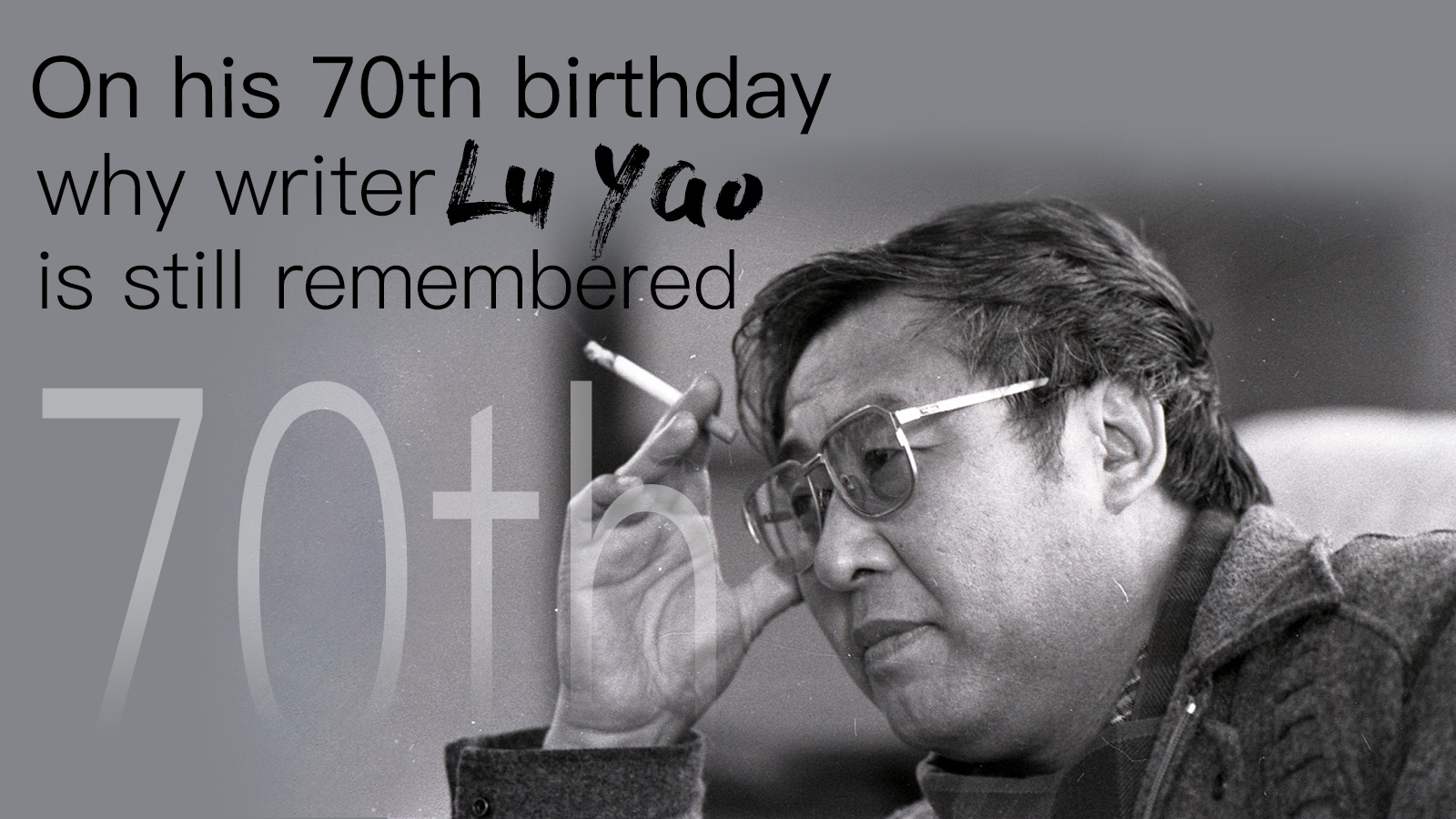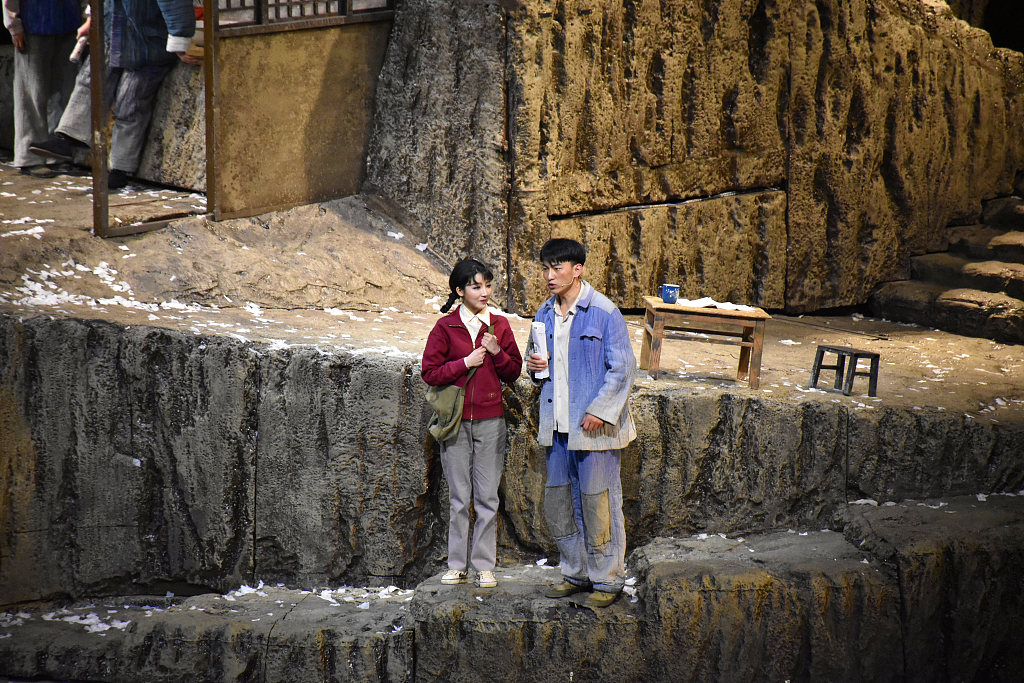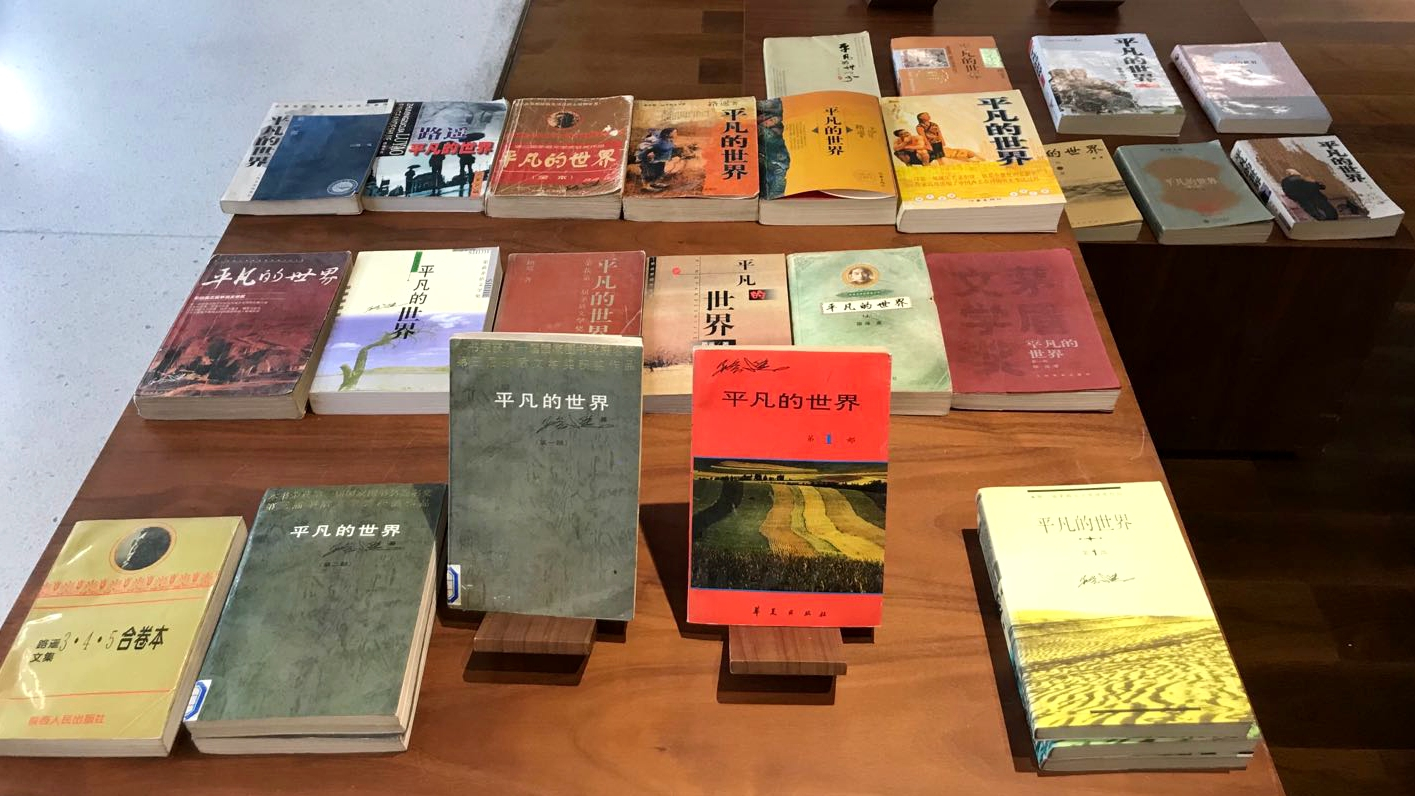
After winning Mao Dun Literature Prize, one of the highest honors for Chinese literati, for his voluminous book "Ordinary World" in 1991, Chinese writer Lu Yao wrote, "Winning a prize does not necessarily define the success of a work, because a writer's work not only has to accept the judgement of today's people, but also has to endure time."
This year marks the 70th anniversary of his birth. Time has proven that both his work and the writer behind them have been remembered.
Who's Lu Yao?
Born in 1949 to a poor farmer's family in northwest China's Shaanxi Province, Lu Yao managed to attend university where he studied the Chinese language and started a career in literature.
He gained nationwide fame after his award-winning text "Life" (1982) was adapted into a movie. Soon afterwards, he secluded himself at a coal mine to write the "Ordinary World" series. It took him three years before the last volume in the one-million-Chinese-character series was published in 1988. He died from an illness in 1992 at the age of 42.
Based on Lu's life experience and observation, the stories in both "Life" and "Ordinary World" depict urban and rural life in northern Shaanxi Province about 40 years ago, when Chinese society was undergoing a transformation. The protagonists in his books, who tried hard to change their fates despite difficulties and suffering, inspired millions of readers.
Decades have passed, Lu's works still enjoy popularity. "Ordinary World" has sold 20 million copies since 2009, while online, views of the audio book for "Ordinary World" hit nearly 30 million from this September to early December.
This year, lectures and reading campaigns were launched to commemorate the writer at different writers associations, universities and bookstores across China.
Focusing on the fate of young people

A play adapted from "Ordinary World." /VCG Photo
A play adapted from "Ordinary World." /VCG Photo
"I myself experienced a bumpy life path, so I fully understand young people who have suffered pains and frustrations but still pursue their lives tenaciously. I always care about their fate with great compassion," Lu wrote.
"Life" depicts character Gao Jialin's tortuous life as the young man returns to his village after graduating from high school. He later goes to the city to pursue a life that he wants, and eventually goes back to village and ends up losing everything he desires.
Gao's ambition for a better life is entangled with his romantic love for two girls – Liu Qiaozhen, who's from a village, and Huang Yaping, who's from a city – which forces him to make hard choices in his career and love.
His story mirrors the lives of many young people at the time.
"When first read 'Life' during my college years, I burst into tears. I felt that my life path and fate resonated with his. It seemed that his blood is flowing in my blood vessels," said Ge Fei, writer and professor at the Department of Chinese Language and Literature, Tsinghua University, at the launching ceremony of the hardback edition of "Complete Works of Lu Yao" in Beijing.
"We feel an intimate connection with Lu Yao. The fundamental situations and difficulties depicted in Lu Yao's works are also faced by us," said Li Jingze, vice chairman of the China Writers Association, on the same occasion organized by Thinkingdom Media Group.
His works are also cherished by young people today. In a survey covering 6,081 young people across China, 66 percent think "Ordinary World" is the most influential book published in the last 40 years.
The heartbeat of the time

Different versions of "Ordinary World" in the past 30 years are presented at Page One bookstore in Beijing. /CGTN Photo
Different versions of "Ordinary World" in the past 30 years are presented at Page One bookstore in Beijing. /CGTN Photo
As a realistic piece of work, the story in "Ordinary World" spans early 1975 to 1985, and aims to "panoramically reflect the huge historical changes of urban and rural life in China."
In his biography, Lu wrote that city life and village life impacted each other as society developed, "the conflict between modern and ancient lifestyles, civilization and backwards, new ideas and traditional views, construct important content of modern life." He presented what he saw in his works.
"In the past 40 years, millions of Chinese people have had new experience, emotions, dreams and pains amid great changes. They are deep in people's heart and Lu Yao wrote it out," opined Li. "His works inspire many to walk ahead out of passion for life with the trends of time, and provide a sense of the meaning of life."
"Lu Yao is considering the future of the society. During the time he wrote 'Life,' China's historical change has lifted its curtain, but how and where to go still needs observation," Ge said. "His works still have connections with today's society in many ways and bring out many important issues for us to consider. This is Lu's everlasting charisma."
"We will read his works repeatedly. After 20 years, you will read different things from his works. As long as his works still have its cultural and social values, Lu still communicates with us," Ge added.
Cover image designer: Qu Bo